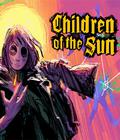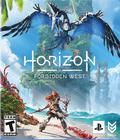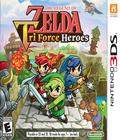While The Legend of Zelda has long been a single-player franchise, The Link to the Past included an optional four-player adventure mode called Four Swords. From there, the franchise has made multiple forays into reviving the concept, including a stand-alone GameCube game and a downloadable version. However, all of those multiplayer experiences were limited by local play — or, in the GameCube version's case, multiple handhelds. The Legend of Zelda: Tri Force Heroes is the first attempt to expand the concept beyond local play.
Tri Force Heroes takes place in the distant, stylish kingdom of Hytopia. Princess Styla was beloved by all the residents for her impeccable fashion sense. Unfortunately, that fashion sense earned the ire of the evil witch of the Drablands, who cursed the princess to be forever unfashionable. The kingdom now languishes in despair, its sense of style doomed. The King of Hytopia sends out a request for stylish heroes who can enter the Drablands and lift the curse that plagues Princess Styla. It just so happens that a certain pointy-eared hero has wandered into Hytopia ....
Players enter the Drablands in teams of three. Each area is comprised of four smaller areas that must be visited in linear order. The team of three effectively functions as one player, sharing hit points and rupees earned; all three must make it through a level to proceed. By default, each character plays very much like Link from Link to the Past. They have a sword and a dash attack available, and players can also pick up other players, a move called "Totem Time." Up to three Links can become a stack, and this is an essential tool to solving many of the puzzles. Three Links standing on each other's shoulders can hit higher obstacles or throw each other farther. However, only the bottommost Link can move and only the topmost Link can attack, so it involves some careful thought.
Unlike other Zelda titles, there are no items to unlock. At the start of every stage, you're given three predetermined items. Sometimes, they are the same items, and other times, each character gets a different item. These are generally classic Zelda tools, like bombs, the boomerang, the bow and the hookshot, though there are some distinctive items as well, like flame mitts and the water rod. Much like Link Between Worlds, item usage is governed by an energy meter, so you don't run out of resources.
The game has some fiendishly clever level design. While the challenges and puzzles start off simple, they quickly become complex. All three players have to work in perfect unison to get past some of the traps. You might need one player to traverse collapsing platforms while another blocks oncoming danger and a third hits switches to disable traps. The boss fights also use this trinity of characters by requiring you to work together to defeat enemies. Item use and Totem Time are essential to defeating bosses. Nobody can "solo" any of the dungeons, and you need to be willing to work together to survive. It might be tempting to throw a friend into a pit, but you'll pay the price later. This is one of the hardest Zelda games in recent memory, and a big reason is that your shared health bar means you can't afford to take a lot of damage.
You don't have linear item progression in Tri Force Heroes. Any items you have in a stage remain in that stage once you're done. Instead, you gain extra power by unlocking costumes, which can be equipped before a stage and grant passive bonuses to Link. For example, the Kokiri Clothes turn the bow into a triple-shot barrage. Costumes can nullify damage, increase the power of items, grant traditional Zelda abilities like the sword blast, offer passive buffs to your entire team, and so on. Some are Zelda references, like a Zora suit or Tingle outfit, while others are goofy and anachronistic, like Link's cheerleader outfit. The clothing system is a good way to offer bonuses without becoming overpowered. Some outfits are absurdly good on certain levels, like the Goron Garb rendering you immune to lava. Others are straightforward, like extra heart containers or a stronger sword.
Tri Force Heroes borrows a bit from Monster Hunter in that it is not designed to be played only once. Every time you finish a stage, you get a chance to unlock a single upgrade item. Two players get basic items while one gets a rare item. These items can then be traded for new costumes. Once you've finished a stage, you can return to complete Drabland Challenges, which give you more difficult tasks to complete, such as finishing the stage without a sword or within a certain time limit. Completing these Drabland Challenges unlocks certain costumes that you wouldn't get otherwise. Technically, the challenges are optional, but to see everything the game has to offer, you'll want to take them on to get some of that sweet loot.
This is going to be a controversial design decision because the game is designed to be played time and time again, but it can also lead to the experience feeling "grindy." There are ways around some of that, such as buying certain costume ingredients at the local shop, but by and large, you'll have to replay stages a few times to get everything you need for the costumes. It's a strong encouragement to replay existing stages and to take on the Drabland Challenges, but it may get tedious. I enjoyed the encouragement in the same way I enjoy taking on bosses in Monster Hunter for their rare drops, but it really needs to appeal to your mindset.
Unfortunately, Tri Force Heroes suffers a lot from the "multiplayer problem." If all of the pieces are in play and working correctly, the game is extremely fun, but even a small amount of lag makes it unplayable. It relies so much on a smooth experience that trying to solve puzzles or get around monsters with lag is an exercise in frustration. Most of the online community seems to agree; any time a hint of lag was apparent, everyone would instantly quit, regardless of how close we were to the end of the mission. I was able to get smooth gameplay quite regularly, but lag occurred often enough to be noteworthy.
The title also suffers from the fact that it depends on players working together. While in the-game communication can pass along most of the important information, it is no replacement for real-time chat. You have simple icons you can press that communicate things like, "Use the item" or "Come over here." They work well most of the time, but when a team gets stuck, it can be aggravating when players try to communicate entirely through simple pictures. I once had to quit a game because the person I was playing with didn't understand the idea of using bombs on a certain object. Playing together with friends is almost a must, and your experience will be heavily influenced by that.
It's clear that the game was designed with the idea of three people playing face-to-face. There are even certain unlockable armors that require special materials you get for playing via local multiplayer. The online multiplayer is a passable replacement, but I'd strongly recommend playing with friends instead of random people.
Tri Force Heroes offers a single-player option, but I can't recommend it. Players are given two "Dopples" and can swap between the main Link and the Dopples at any point. The problem is that this is clearly not what the game is designed for. There are some nice shortcuts, such as controlling one Dopple's attack while moving with a different one during Totem Time. Yet they're just too awkward, slow and weird compared to actual three-player co-op. You have to swap constantly, and areas that are a breeze with three players become tedious stop-and-start marathons as you try to shepherd three characters through the traps and dangers. You don't have to worry about being disconnected, but that's about the only thing it has going for it. Tri Force Heroes wasn't designed for single players, and it shows, much like the previous Four Swords titles.
There's also a competitive Coliseum mode in which players choose a variety of themed stages and then battle one another, with the winner getting rare materials and some rupees. The issue is that the Zelda combat system is not well suited for this. The items are awkward to use against opponents, and a lot of the victory comes down to who has the costume best suited for the arena.
Tri Force Heroes is a cute-looking game. It's based on roughly the same engine as Link Between Worlds but done in an art style that's closer to Wind Waker. The gameplay is smooth and fluid, and the environments are easily read and fun to look at. It's a touch generic at times, but it does its work well. The music is a mix of new songs and classic Zelda tunes, and it does a good job of setting the mood.
At its best, The Legend of Zelda: Tri Force Heroes is some of the most fun you'll have on the 3DS. Clever puzzles, fun boss fights and crazy costumes make for a charming and enjoyable experience. However, there are too many things that can go wrong to easily recommend the game to those who may not have a dedicated group of local friends to play with. If you do, the game is an absolute blast, even if it gets a little "grindy" at times. Between solving puzzles and battling fiendish foes, it captures the feeling of Zelda in a multiplayer game better than any other. Solo players will probably want to avoid the game, but anyone looking for multiplayer 3DS action will be hard-pressed to find a better game on the system.
Score: 8.0/10
More articles about The Legend of Zelda: Tri Force Heroes











 In The Legend of Zelda: Tri Force Heroes, three players team up– each as Link – to cooperatively make their way through inventive dungeons and battle bosses.
In The Legend of Zelda: Tri Force Heroes, three players team up– each as Link – to cooperatively make their way through inventive dungeons and battle bosses.























